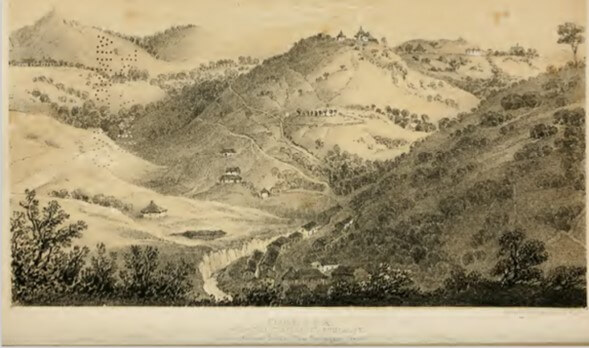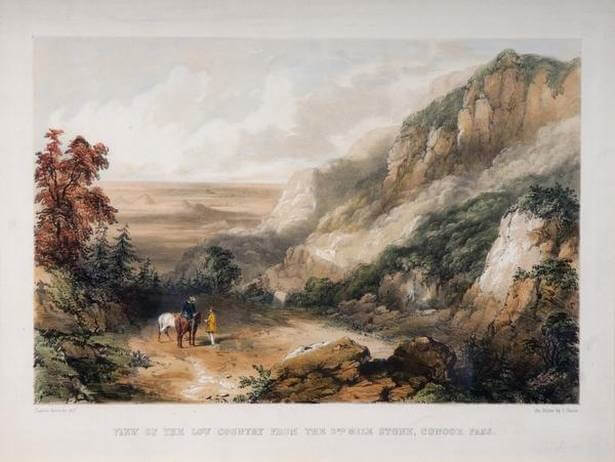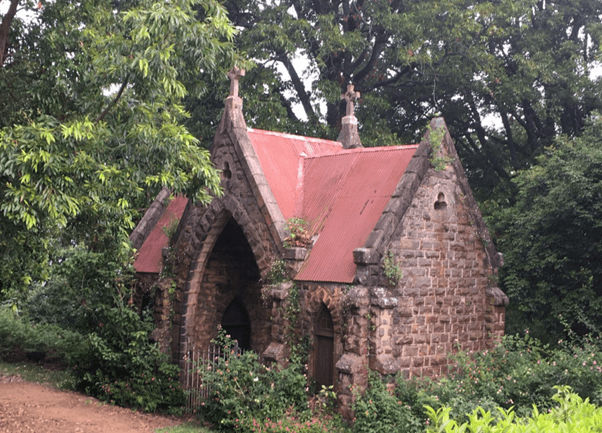Located off the beaten track on the slopes of the Western Ghats, Tiger Hill Cemetery has developed a mystical reputation and has become a destination for thrill-seeking tourists and film-makers alike.
The Nilgiris District of Tamil Nadu came into the possession of the British East India Company in 1799, after the defeat of Tipu Sultan at the Battle of Srirangapatam, but its inaccessibility meant that it would be another twenty years before the beauty and attractive climate of the mountains would be surveyed and appreciated. At that time Ooty was developed, first as a military sanatorium and, after 1834, as the summer capital of the Madras Presidency, away from the heat of the plains.
Twenty miles away, Coonoor, was still a small, unappreciated planters’ town which began life as a stopping place on the Ghat Road, connecting the railhead at Mettupalayam with Ooty, In 1870 the Madras Sappers and Miners began making a motorable road out of the cart track and the new Ghat Road, opened in 1871, turning Coonoor into the gateway to the Nilgiris and transforming its fortunes.

Tiger Hill cemetery opens
With burial space at All Saints’ Church fast running out towards the end of the 19th century, it was decided that Coonoor should have its own Christian cemetery to supplement those at Kotagiri and Ooty. Surrounded by tea plantations, the new Tiger Hill Cemetery was opened in 1905.
With its remote location amidst mist-covered hills, Tiger Hill has developed a mystical reputation and has become a destination for thrill-seeking tourists and film-makers. Unfortunately, it has also drawn in undesirables who have deliberately or unintentionally damaged the headstones, and its lush grassy areas have been equally attractive to huge lumbering gaur (Indian Bison), and even to elephants, which have wreaked even greater destruction. It is hoped that the new, higher, reinforced perimeter wall, to which BACSA have contributed support, will provide new protection for the foreseeable future.
Within the cemetery there are about 500 British graves. Planters and their families predominate and there are military and government workers, as well as many connected with the railways. The Nilgiri Mountain Railway, now recognised as a UNESCO World Heritage site, and its Coonoor Station, were built soon after Tiger Hill opened; they are a draw to tourists from far and wide.

Notable burials
Amongst those who are buried at Tiger Hill is A. T. W. Penn, pioneering photographer who documented the people of the Nilgiris and Southern India from the 1850s to the 1870s. Another early photographer of Coonoor, Samuel Boesinger is also buried here as well as Herbert Arthur Pople, one of the first translators of Thirukkural into English, C. M. Inglis, the curator of the Darjeeling Natural History Society, the Reverend John Hackney, Priest Missionary to the Karens of Burma, who translated the Prayer Book into Karen and compiled a Karen hymn book, and Sir Frederick Nicholson, Collector of Madras who is considered to be both Father of Fisheries in India and of the Indian Cooperative Movement.

What the future holds
With a population in excess of 50,000, Coonoor is flourishing, and is now one of the most famous retirement retreats for the wealthy in India but the local Christian community is shrinking, so, unlike other places in India, Tiger Hill looks set to have sufficient space for future local Christian burials. It will continue, though, to require wider support from those interested in this hidden gem.
Phillida Purvis, June 2021
